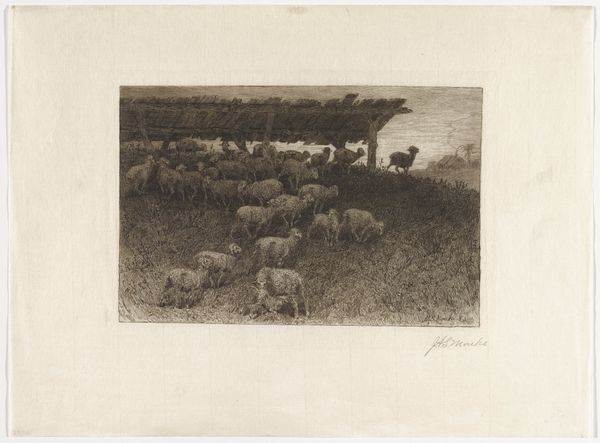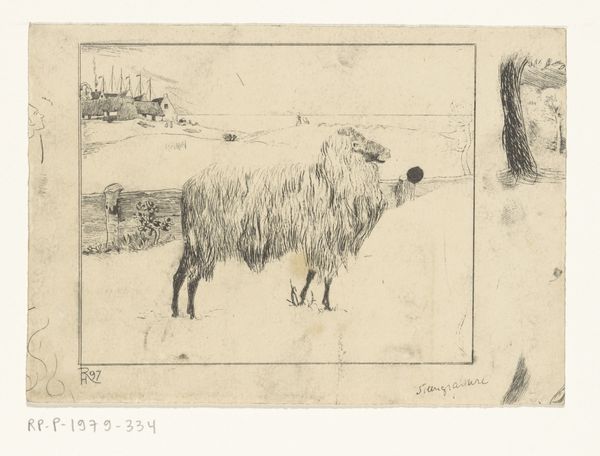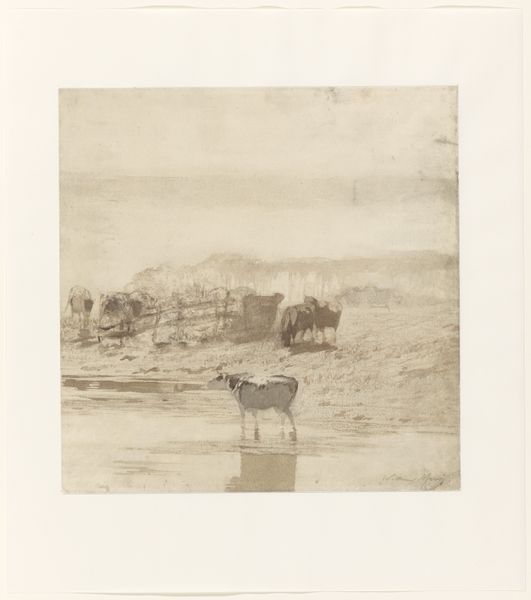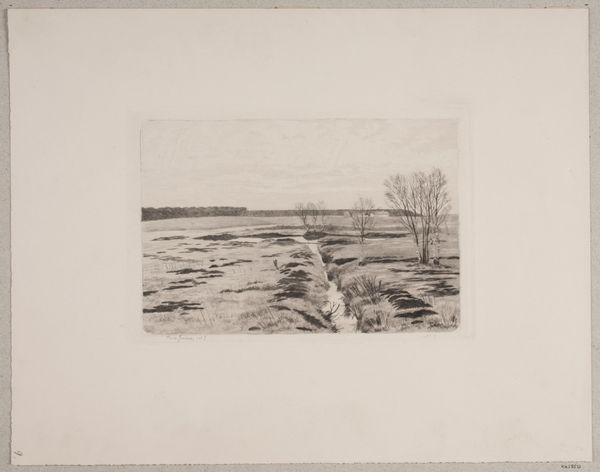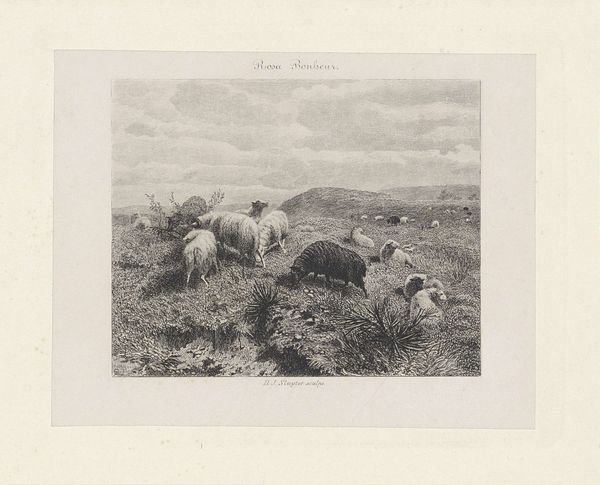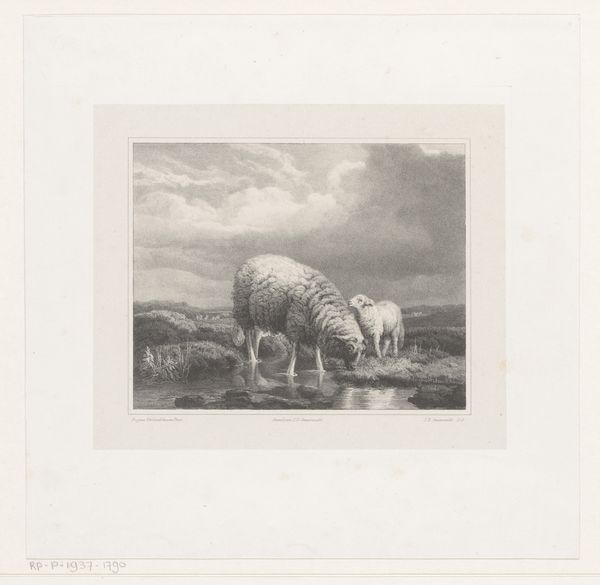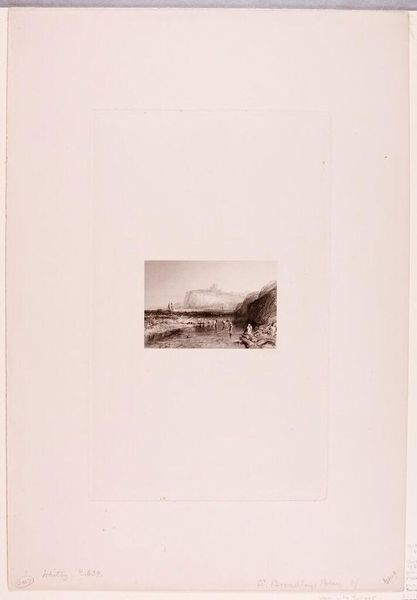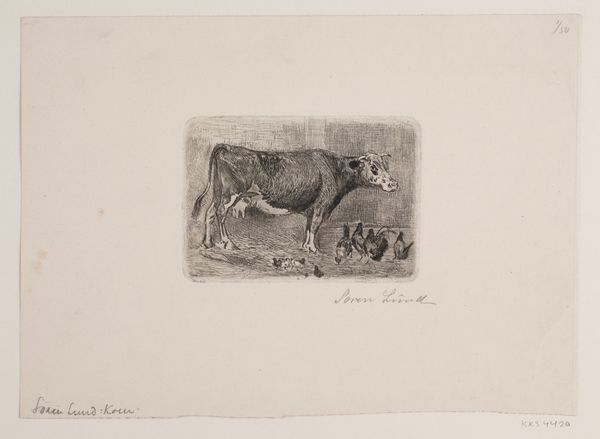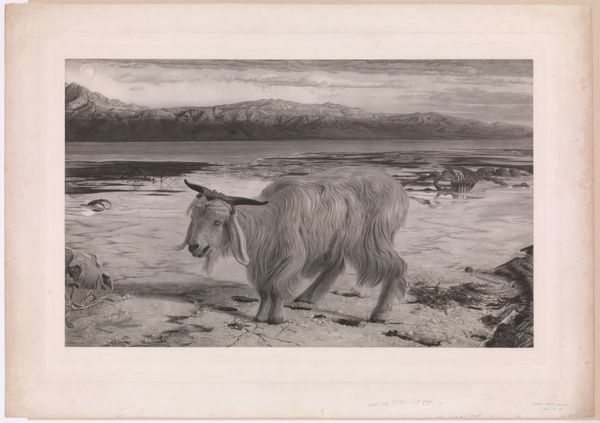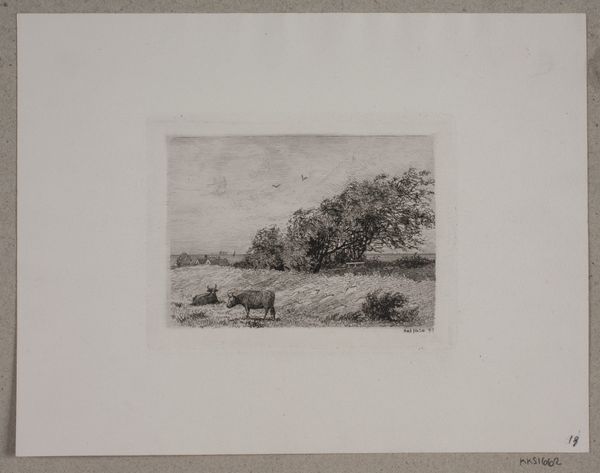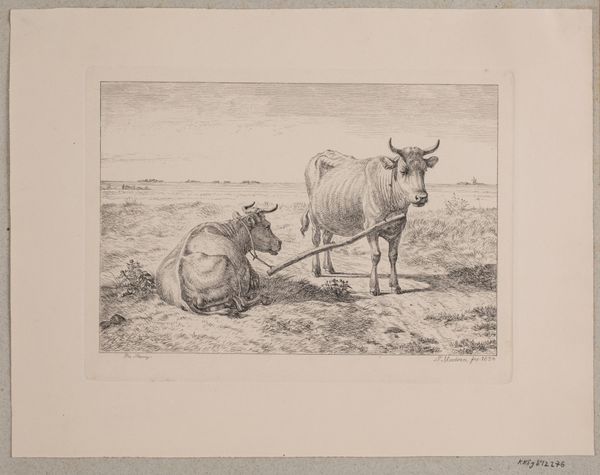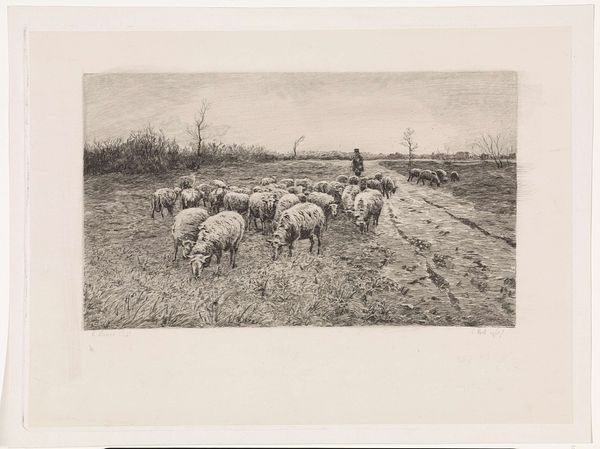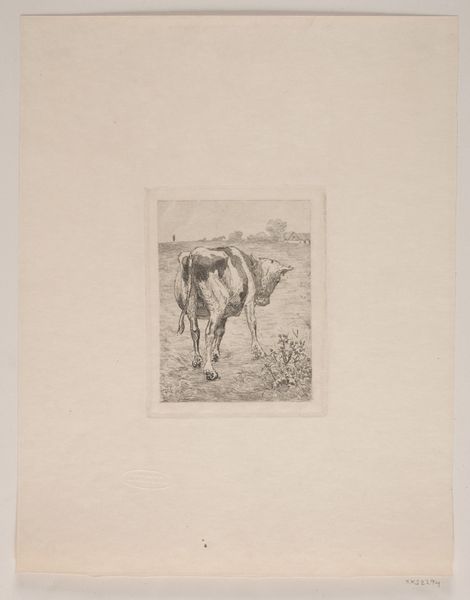
Dimensions: 100 mm (height) x 130 mm (width) (Plademål)
Hans Christian Gether Caspersen created this small etching, "Sheep on the Beach," sometime between 1880 and 1939. Etching is an indirect intaglio process, meaning that the artist uses acid to bite lines into a metal plate. The plate is first covered with a waxy, acid-resistant ground. Caspersen would have scratched away at the ground with a needle, exposing the metal beneath. When dipped in acid, the exposed lines would be etched. The depth of the line determines how much ink it holds, and therefore the darkness of the printed line. The subject here is sheep, a motif deeply entwined with labor and land. The sheep's wool would have been sheared and processed, a laborious endeavor that, through the market economy, eventually provided clothing and warmth to people far removed from this coastal scene. The artist chose to focus on the materiality of the scene; the soft wool of the sheep, the choppy surface of the water. Paying attention to the materials and making of art reminds us of the social connections and production that ultimately define it.
Comments
No comments
Be the first to comment and join the conversation on the ultimate creative platform.
